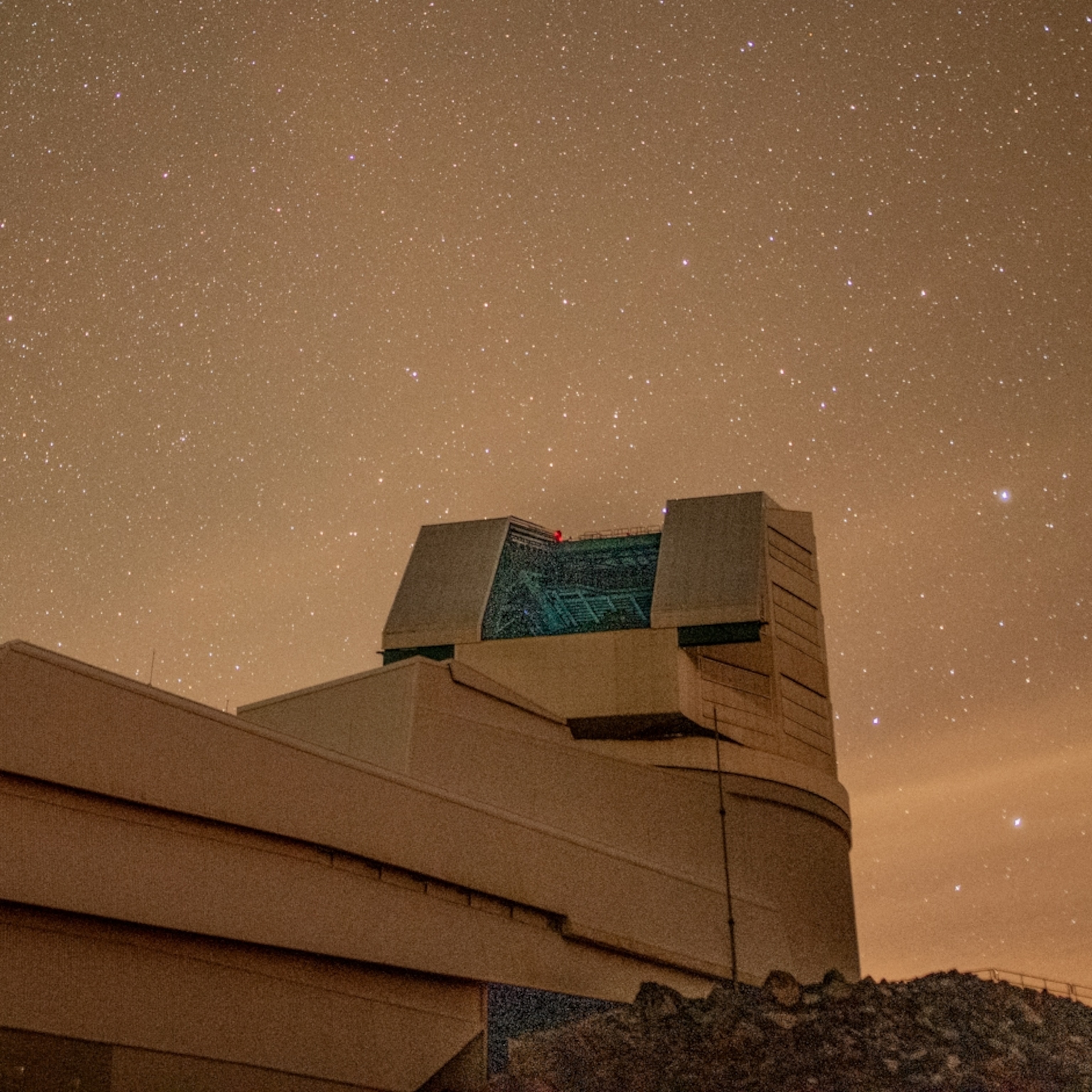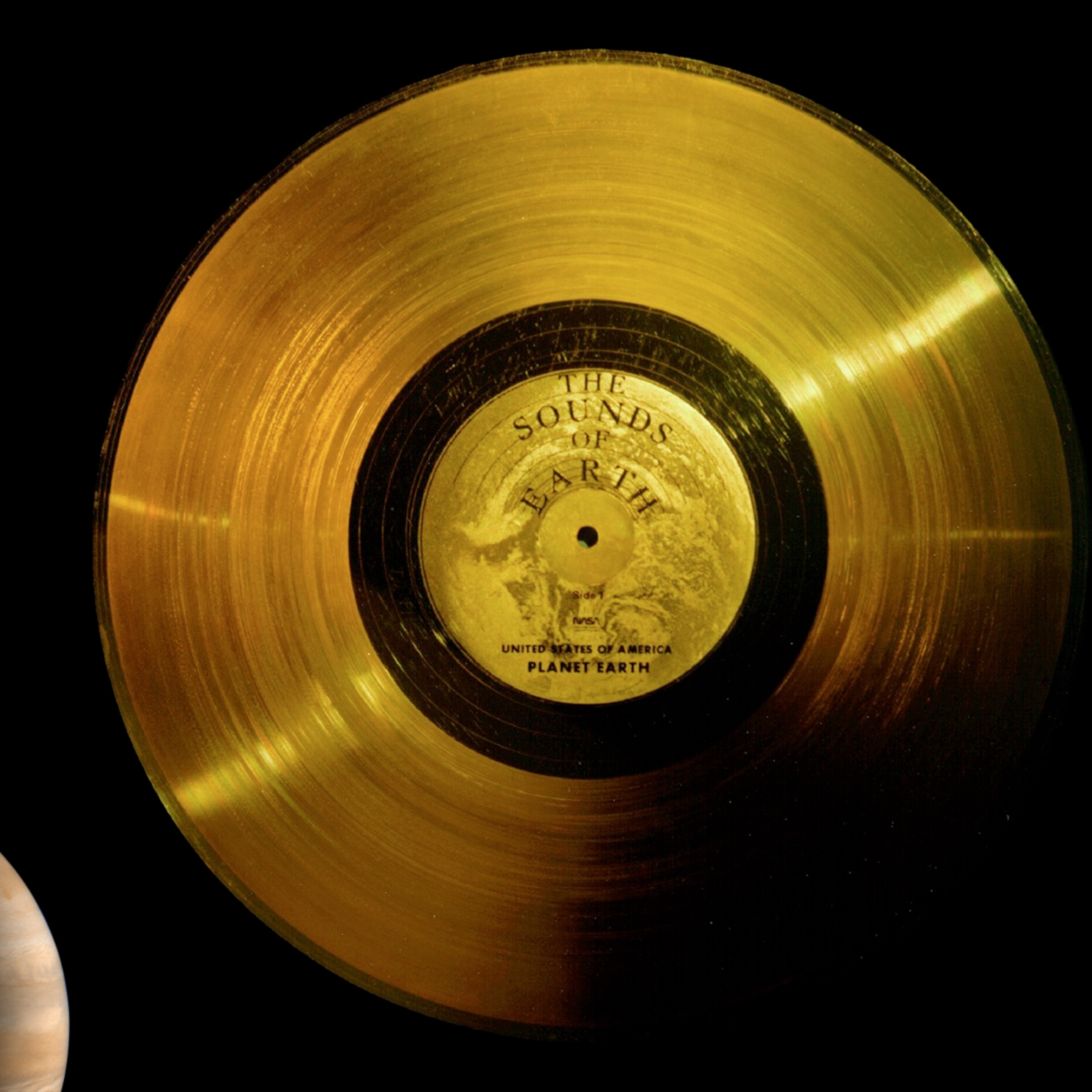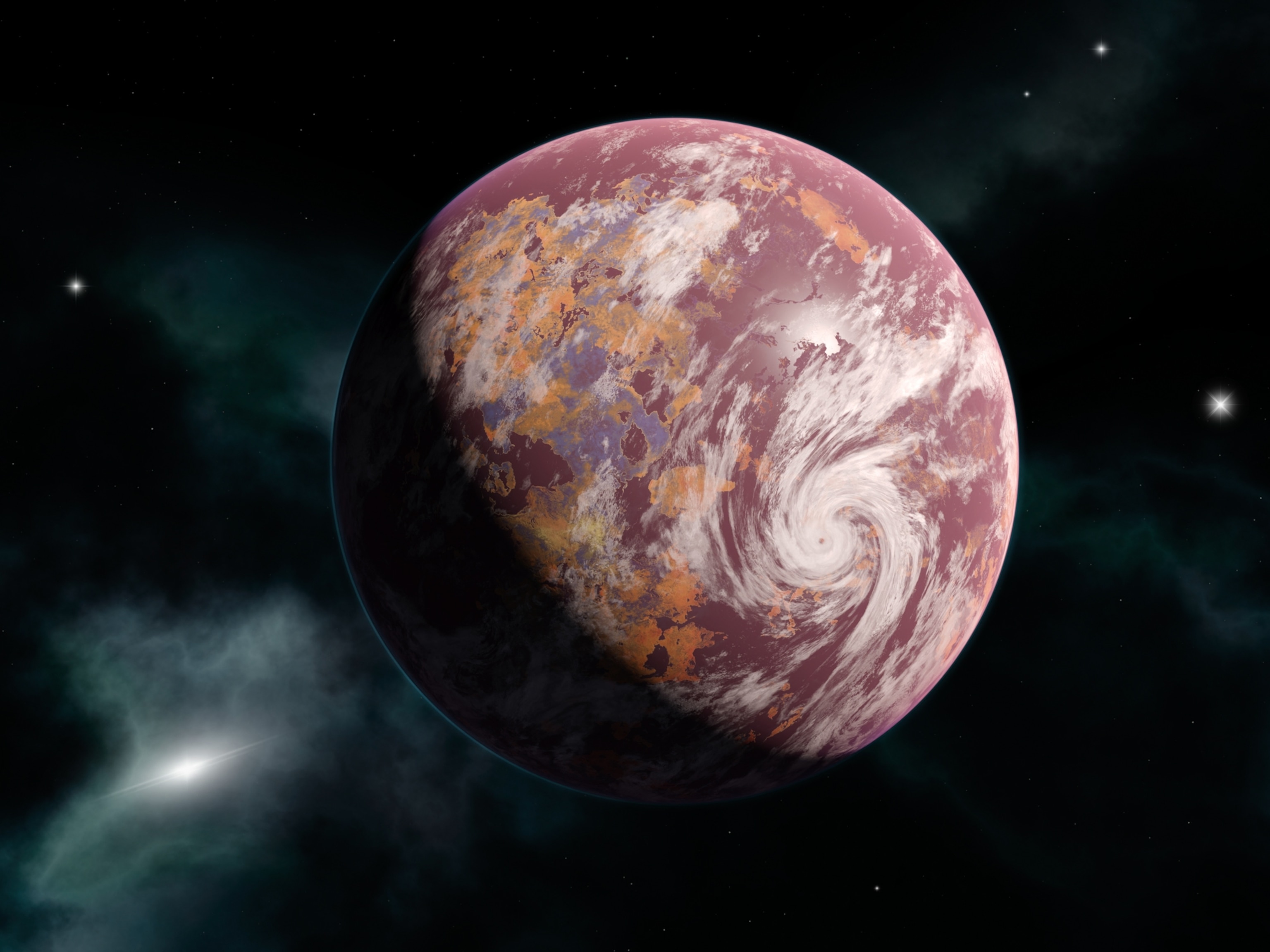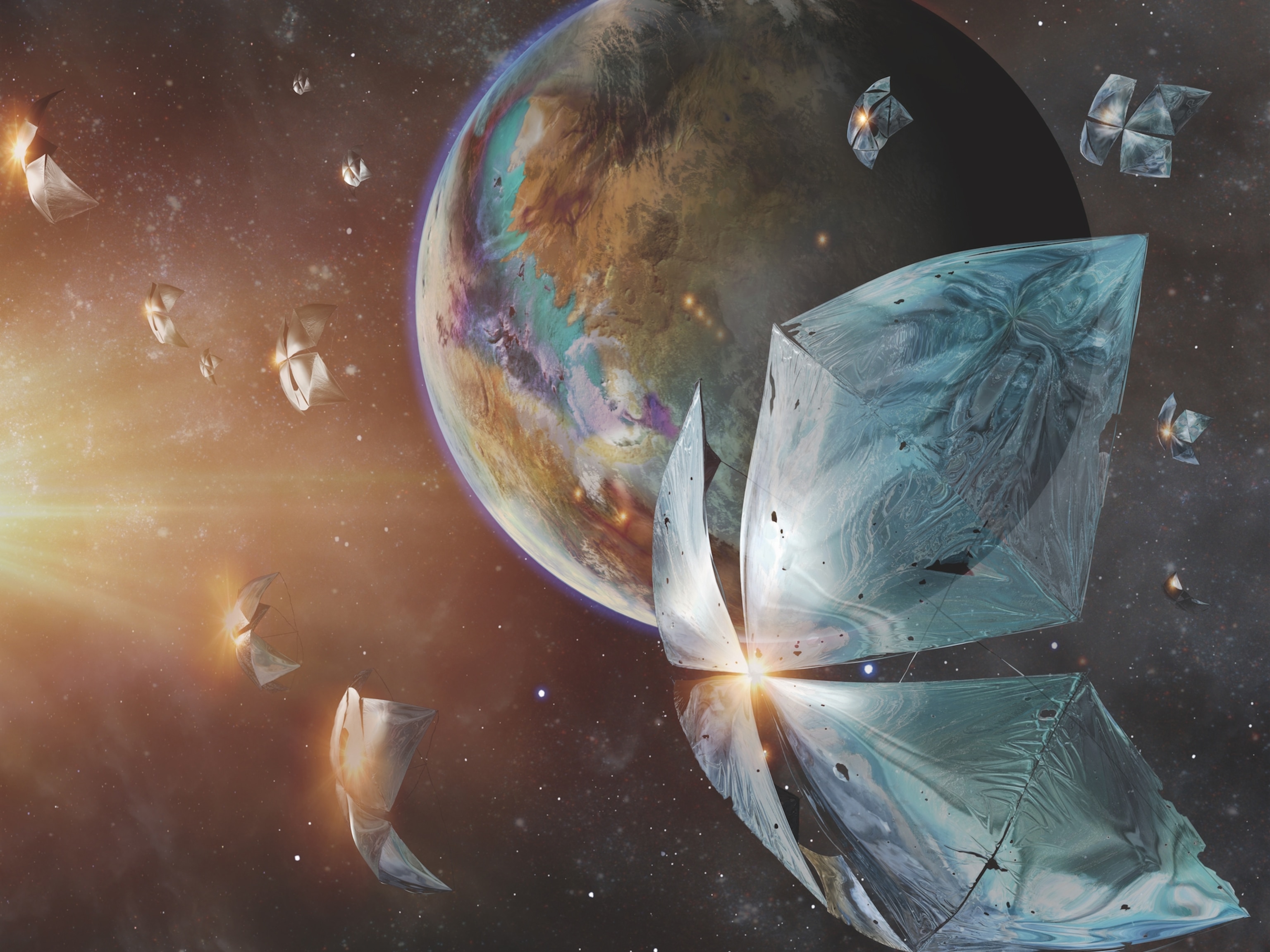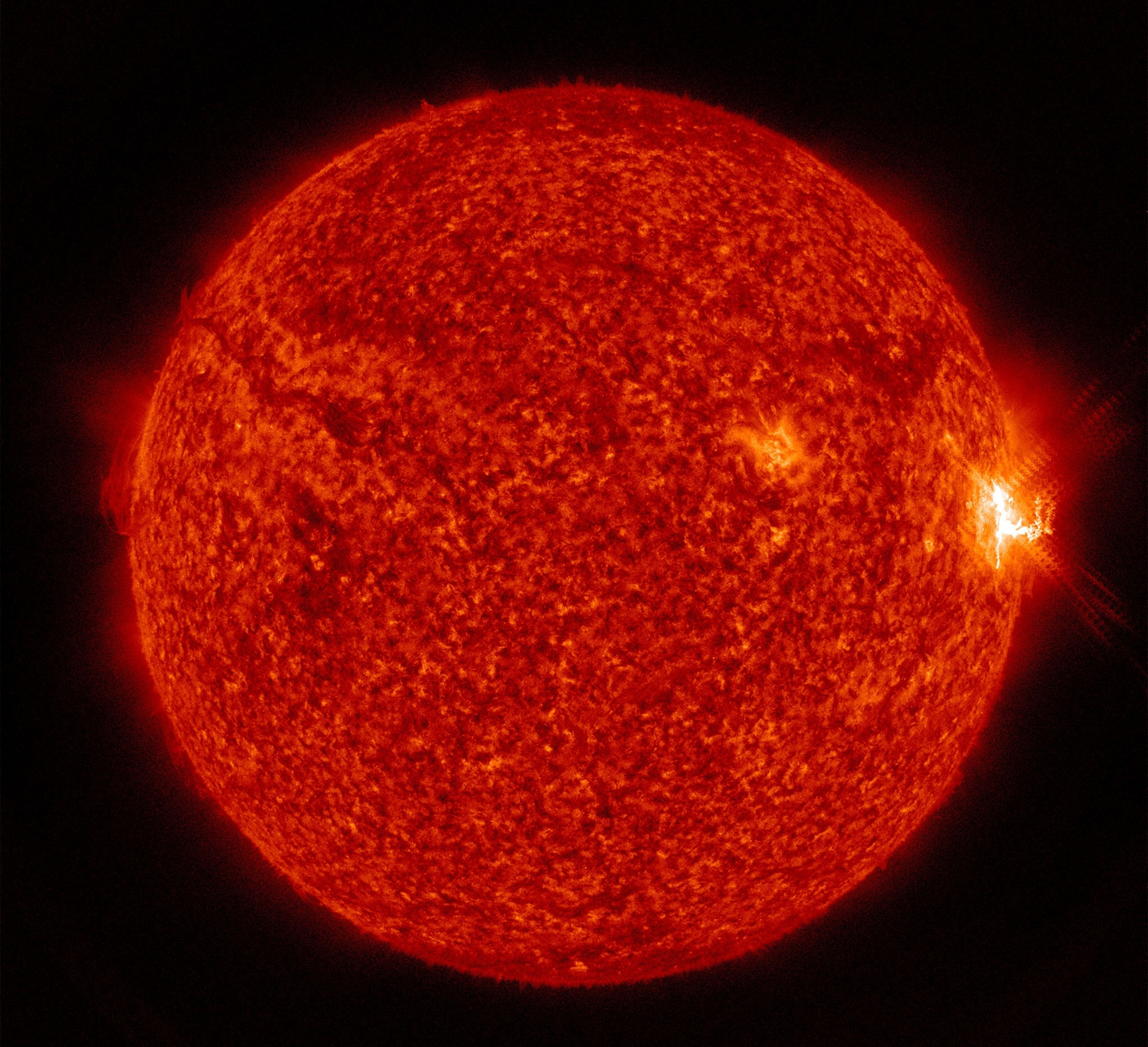
Looking For Life on Proxima B? Try Glowing Aliens.
Transforming harmful radiation into fluorescence could help life survive on a planet orbiting the volatile star Proxima Centauri.
Imagine a softly glowing world, inhabited by a multitude of species that fluoresce in response to their star’s violent outbursts. This could be a vision of Proxima b, the newly announced planet orbiting the nearest star to our sun.
That star—a faint red dwarf called Proxima Centauri—may be close by, but it has a rather infamous temper. A flare star, Proxima is well known for blasting extreme amounts of damaging ultraviolet light and charged particles into space.
Normally, bombardment by mutagenic particles is harmful for life as we know it. But what if alien life-forms evolved a glowing biological shield that could transform the fallout from Proxima’s spasms into something less lethal—and also be detectable from Earth?
“For the duration of a flare, the planet should glow, and that change could be strong enough to detect on planets around nearby flare stars,” says Cornell University’s Jack O’Malley-James, co-author of a new study describing the idea, which has been submitted to The Astrophysical Journal.
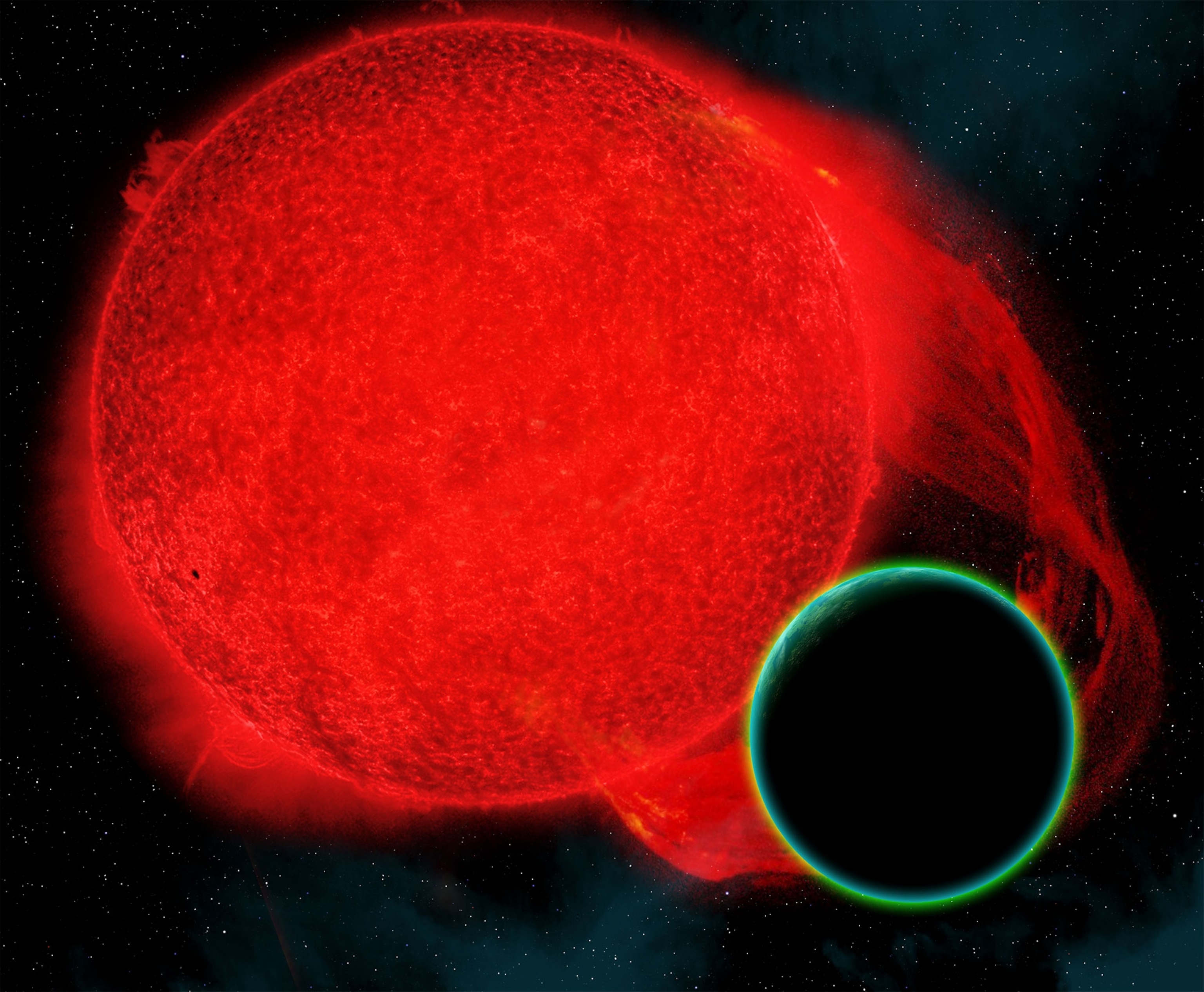
For a long time, scientists thought mainly about how life might evolve on planets orbiting stars like our sun, which in comparison to Proxima is relatively calm and warm. It wasn’t until the last decade or so that cooler, dim red dwarfs stepped into the astrobiological spotlight.
Stars like Proxima might be somewhat hostile planetary hosts, but these meanies rule the galaxy, making up somewhere around 80 percent of the Milky Way’s stellar population. And data from recent exoplanet surveys suggest worlds around red dwarfs are incredibly common, so it makes sense to think about what kinds of life might have the fortitude to survive such stellar fury.
That’s where O’Malley-James and Cornell University’s Lisa Kaltenegger enter the story. The goal, Kaltenegger says, was to think a bit outside the box and come up with various strategies that might help life on these worlds survive—and which might also be detectable by astronomers searching for E.T.
“We decided to look into more advanced organisms and see if they had any mechanisms that could produce signs of life nobody thought of yet,” Kaltenegger says. “Other planets could be covered by life-forms not dominant on the Earth, and we could spot that in the light we collect.”
She and O’Malley-James began by considering all the different colors of life that could be present in a planet’s reflected light. Then they took a deep dive into the strange world of undersea life, where many creatures already sort of look like aliens … and that’s when they came across corals.
On Earth, some corals absorb and transform UV radiation into less energetic wavelengths of light. They do this with the help of specialized fluorescing proteins that absorb incoming UV or blue light and then re-emit it as a different, longer wavelength. This means that if a coral is illuminated by the right kind of light, these pigments will glow in a characteristic shade of red, green, or orange.
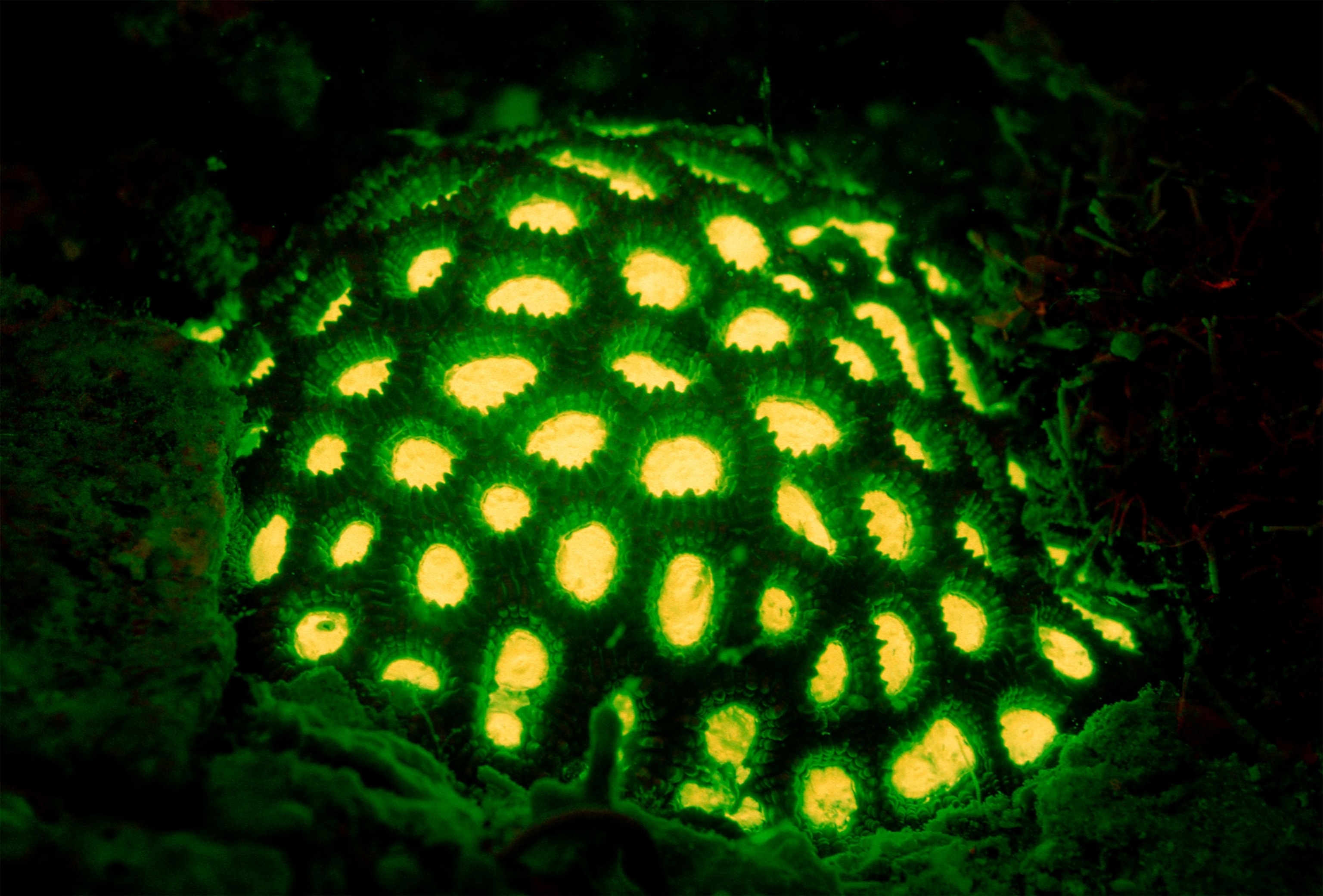
Some corals are thought to shield themselves and their cohabitating algae from radiation in this way. But they aren’t the only organisms on Earth that fluoresce: Sea turtles, sharks, flowers, fish, and others do as well, though they may be using their glowiness for communication rather than protection. Whatever the reasons are, though, it appears fluorescence has independently evolved multiple times on this planet. Why should it be any different on a faraway world?
“It is an absolutely brilliant idea to employ biofluorescence in the search for life on planets orbiting stars in our galaxy,” says the City University of New York’s David Gruber, who studies fluorescing marine organisms. “The field of biofluorescence is still a relatively new field of biology. And the premise that biofluorescence could be used as a tool to aid in the search of extraterrestrial life is very exciting.”
If Kaltenegger and O’Malley-James are right, Proxima’s flares could ignite a way of life that glows under pressure and provides an observable, fluorescent fingerprint—a softly glowing sign that we are not alone in this vast universe.
“We would see a detectable, temporary change in the color of light reaching us on Earth as we observed it,” O’Malley-James says. “By looking at the ratio of, say, green relative to red and blue light intensities in the spectrum, we would be able to tell that the color of the planet is changing.”
Using computer models, he and Kaltenegger simulated the light produced by a fluorescent biosphere and then asked whether available technologies would be able to see it. In their model, a planet in a habitable orbit around a flaring red dwarf was given an Earth-like atmosphere, and varying amounts of vegetation, oceans, and cloud cover. They also added a dash of fluorescing minerals, to see if they could tell the difference between light from rocks and the signatures of living, breathing metabolisms.
When they smacked their simulated planet with a flare, they saw that under many conditions, glowing biosignatures in our cosmic neighborhood should be distinguishable by future telescopes.
“The idea of biofluorescence as a sign of life is a neat idea,” says the Adler Planetarium’s Lucianne Walkowicz. But she notes that many, many things would have to go right for a biofluorescent signature to be detectable. Fluorescing proteins would need to be much more efficient than they are on Earth, she says, and such organisms would have to be essentially everywhere. Not to mention that neither an atmosphere nor surface water is a given in the harsh environments around red dwarfs.
“Having said that,” she says, “we truly don't know what kind of life might be out there, so it's both fun and useful to explore all the corners of what alien biospheres might do to survive.”
It seems like a relatively straightforward idea, but it’s not without caveats. For one, organisms on Earth have also evolved undetectable protective sunblocks to shield them from UV radiation, and in the simplest cases retreated underground or undersea. NASA’s Niki Parenteau also suspects that looking at more fundamental, more primordial proteins—say, auto-fluorescing photosynthetic pigments—may be a more realistic analog of life on planets around red dwarfs.
“It's a more evolutionarily appropriate scenario,” she says, while noting that such fluorescence would be harder to detect.
The concept of fluorescent biospheres is obviously speculative, as all hypotheses about alien life are. But it might not be so far-fetched. And there really would be nothing quite as great as finding glowy aliens on the exoplanet nearest Earth.
Follow Nadia Drake on Twitter.

